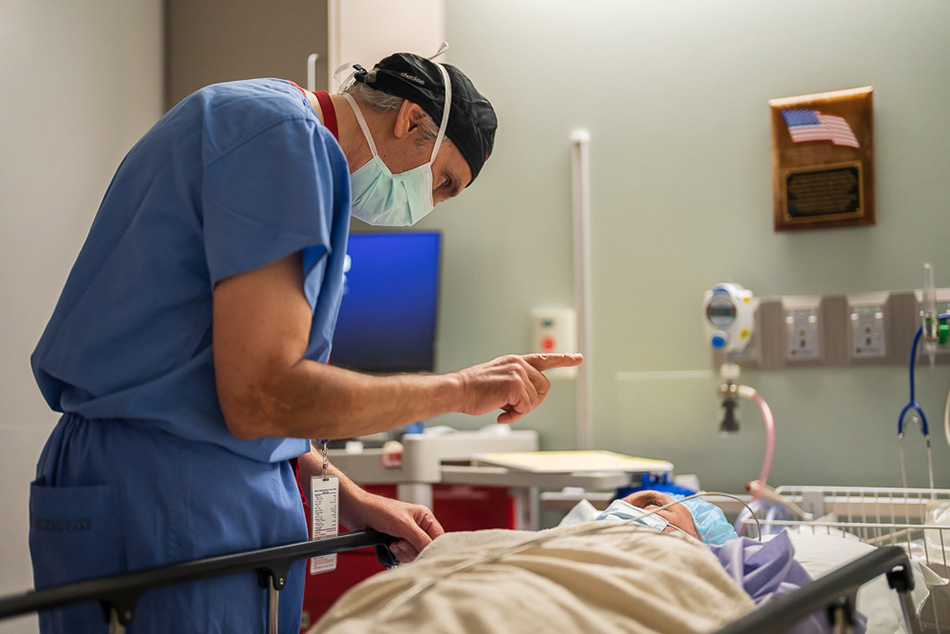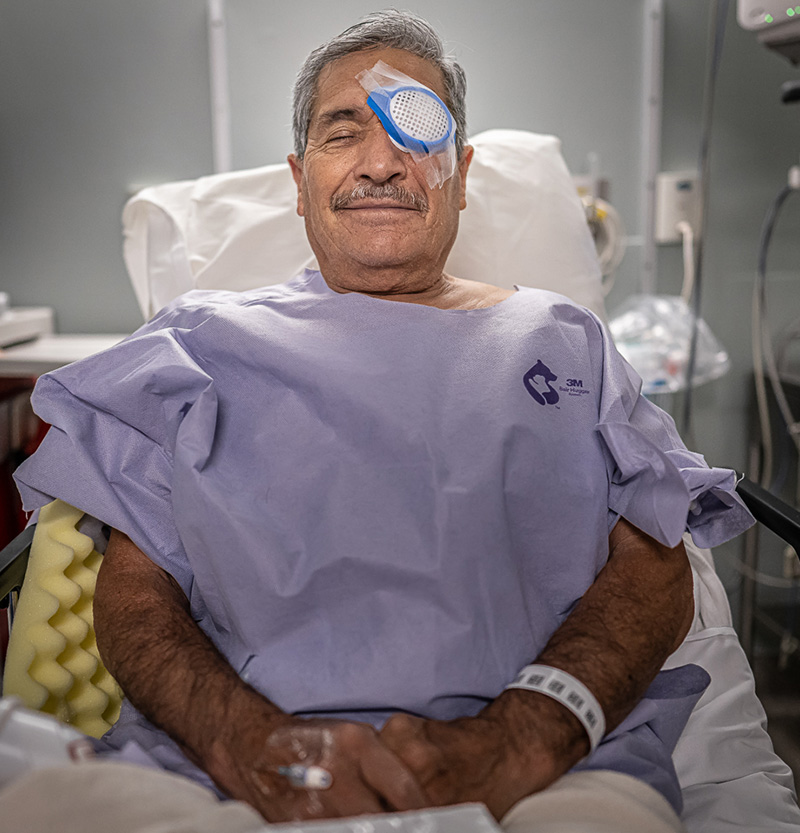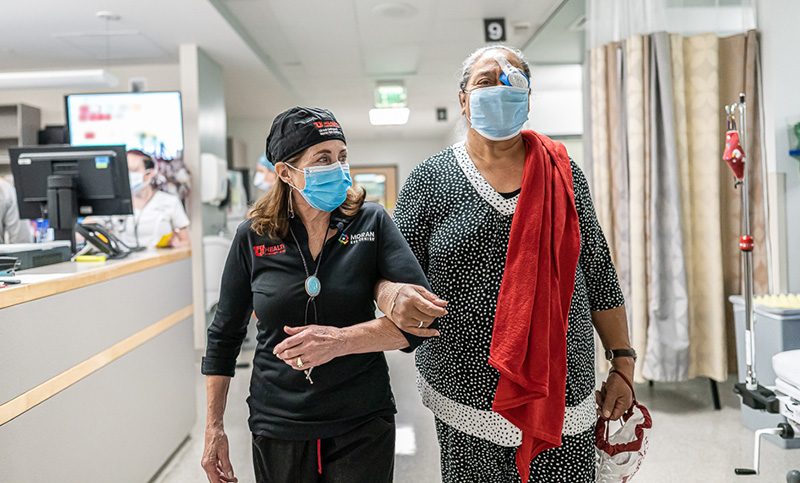
"I can see again, thanks!"
Those were the joyous parting words of a cataract surgery patient as he left the John A. Moran Eye Center recently following an annual charitable surgery event known as Operation Sight Day.
On Saturday, June 12, 2021, 17 people walked into the Moran Eye Center at the University of Utah with severe vision loss or blindness from cataracts, a clouding of the eye’s lens.
But countless others came with them. In any community, whether in Utah or a low-resource nation thousands of miles away, the ripple effect of blindness extends far beyond one individual.

Sela needed her vision to drive and to care for her 32-year-old, severely disabled son. It was getting too dangerous for Mark to operate a blow torch at his job, and he needed to keep himself and others safe. Raul had to keep his job to support his family, but he could no longer see well enough to handle components correctly on an assembly line.
Surgery to replace the eye’s natural lens with a synthetic one can cure cataracts, but many underinsured or uninsured people like Sela, Mark, and Raul cannot afford it. By Saturday afternoon, they could see again thanks to Operation Sight Day. The day is funded solely by the generosity of donors, while surgeons, nurses, technicians, and staff donate their time to the effort.
It’s one of several local and international efforts by Moran’s Global Outreach Division to increase access to eye care.
"We work to increase access to eye care and save eyesight around the world," said Craig Chaya, MD, the division’s co-medical director. "In developing countries, that means teaching and training more doctors. Here in Utah, that means reaching underserved communities as our doctors volunteer in free clinics throughout the year and hold events like Operation Sight Day."

Moran Eye Center doctors identify patients for charitable surgery as they hold free clinics with partnering organizations. Those partners include the Fourth Street Clinic, Maliheh Free Clinic, People’s Health Clinic in Park City, Salt Lake City’s Project Homeless Connect, the Refugee & Immigrant Center—Asian Association of Utah, the International Rescue Committee, and the Utah Navajo Health System.
Participating Moran physicians included Chaya, Nick Mamalis, MD, William Barlow, MD, Rachel Patel, MD, Christopher Bair, MD, Bradley Jacobsen, MD, and Theresa Long, MD. In addition, the event gathered nearly 40 volunteers as medical personnel lent their support. Since it began in 2012, Operation Sight Day has restored sight for more than 200 Utahns.
About Moran’s Global Outreach Division
Moran’s local outreach programs have continued with safety measures in place during the COVID-19 pandemic. Utah outreach efforts include free clinics, eyeglasses, and surgery for refugees living in Utah, people experiencing homelessness, members of the Navajo Nation, and people with spinal cord injuries.
In a typical year, the Global Outreach Division provides about 1,000 sight-restoring surgeries, 5,000 eye exams, and 2,000 free pairs of eyeglasses while training 30 international physicians and nurses; some 120 volunteers perform 12,500 service hours.